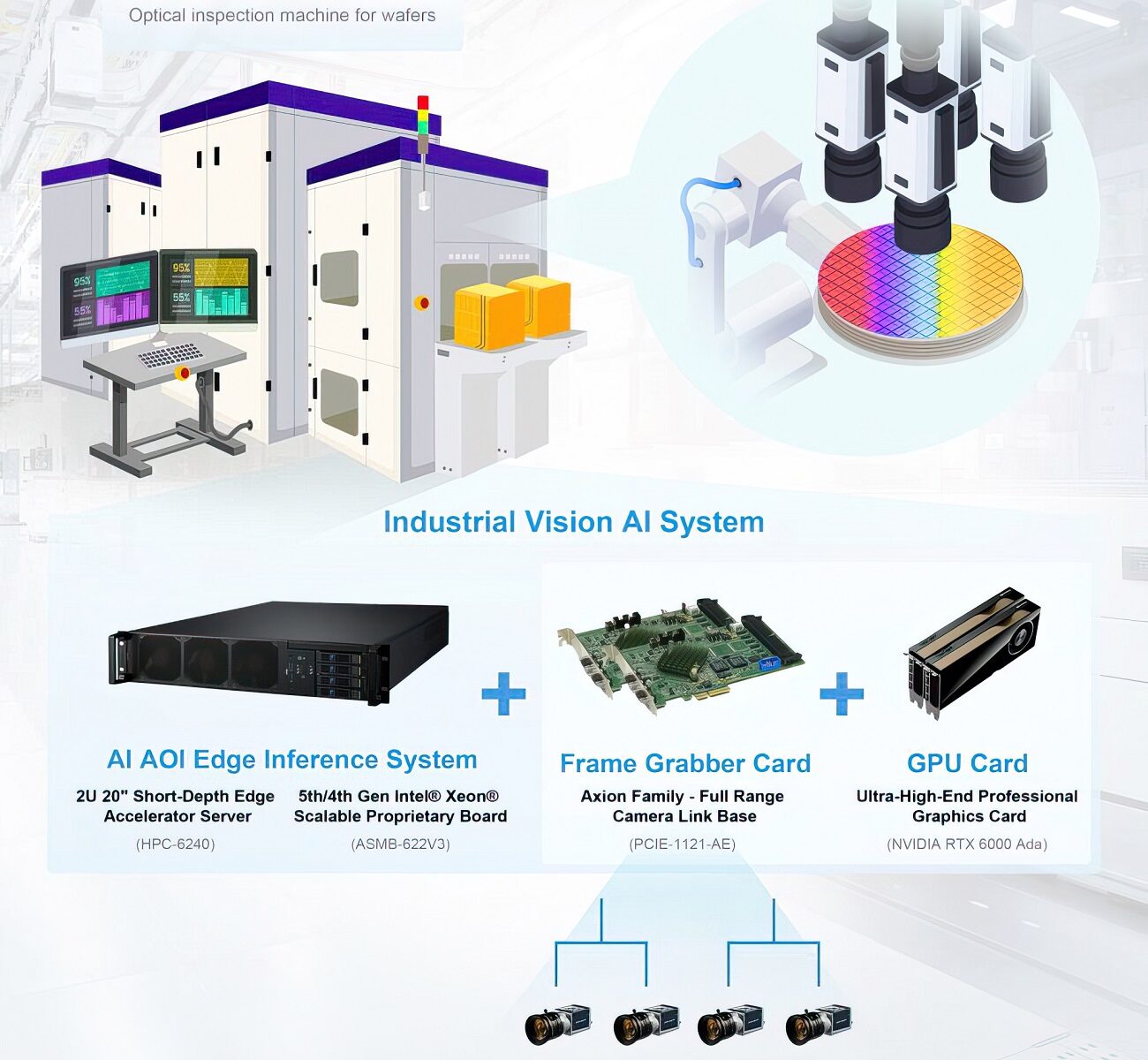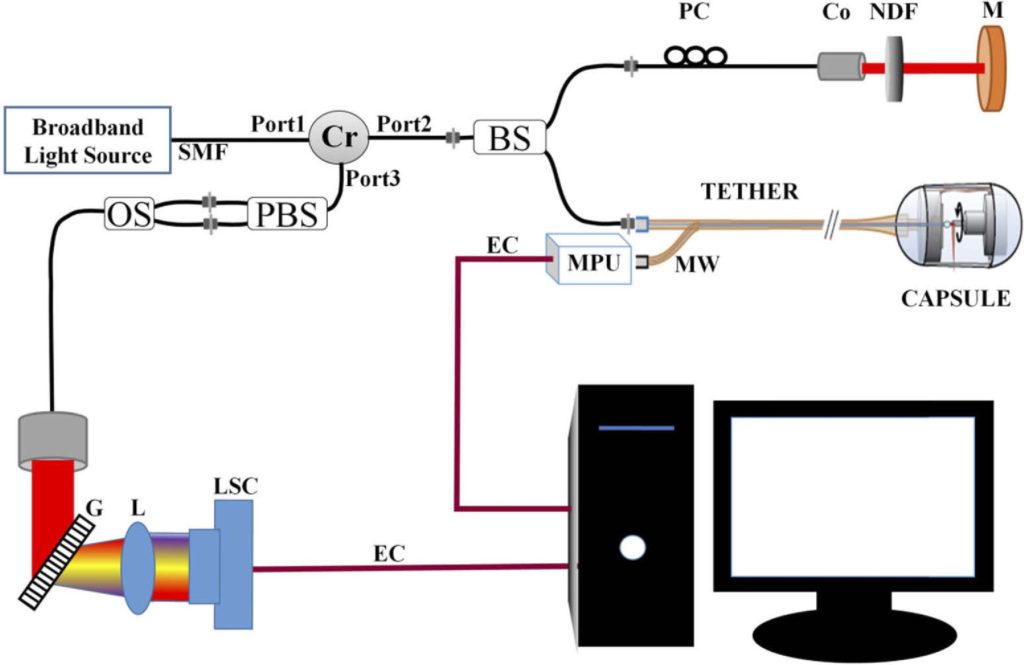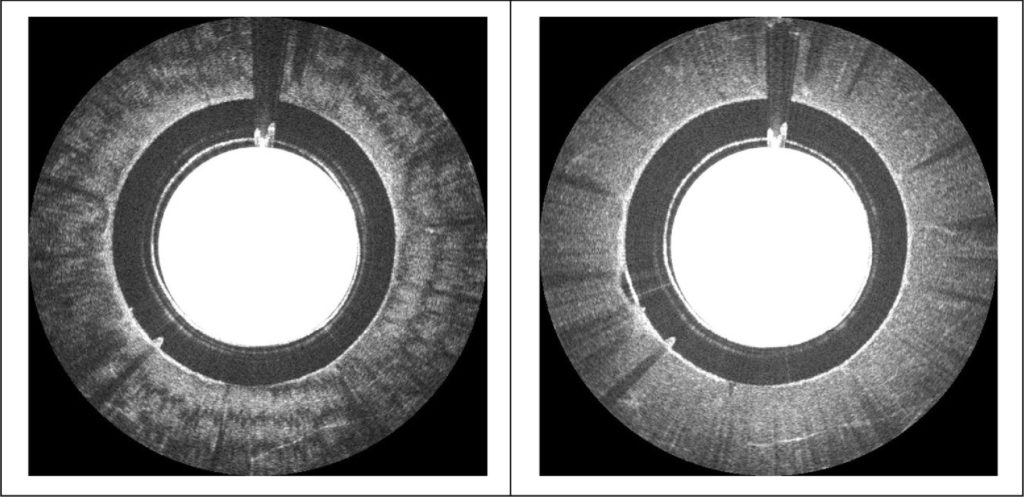WOBURN, MA, AUGUST 13, 2025 — In the relentless pursuit for near-zero defects per million (DPM), many manufacturers are turning to Industrial Vision AI for fully automating their inspection processes. Unlike traditional machine vision that relies on rigid, rule-based systems, Vision AI has the agility to learn, adapt and handle day-to-day variability. Using high-resolution imaging technologies, AI algorithms, and real-time processing, Vision AI provides precise, reliable defect detection for meeting rigorous global standards.
One sector aggressively deploying Vision AI is semiconductor fabrication. Manufacturing semiconductors involves multiple steps like deposition, etching, doping, and lithography. During each step, Vision AI is used to identify imperfections that could lead to downstream issues. Along with pinpointing scratches, pattern errors, or particles on wafers, Vision AI inspects etched features at the nanometer scale, verifies uniformity in material deposition, and confirms perfect metallization. For chips requiring soldering or bonding, Vision AI precisely monitors alignment in die bonding, wire bonding, and solder joints. Because of this, Vision AI has proven to improve yield and minimize costly waste.
OPTICAL INSPECTION
For more than a decade, Advantech has driven innovation in Vision AI. Its advanced systems are supercharged by AI Edge servers featuring Intel Xeon scalable processors and leveraging multiple NVIDIA GPU cards to accelerate inspection without compromising performance.
In 2023, we became part of the Advantech family. Our CoaXPress (CXP) and Camera Link interface frame grabbers are now being deployed in Advantech Vision AI, taking these industry-leading systems to the next level in image acquisition. BitFlow frame grabbers are making it possible for Advantech Vision AI to capture and analyze ultra high-resolution images without experiencing latency or frame loss, even in multi-camera setups. Our diverse range of frame grabbers also enables the configuration of modular and scalable Advantech Vision AI systems customized to a manufacturer’s unique processes.
WORKING EXAMPLE
As an example, let’s explore an Advantech Vision AI solution integrated into an optical inspection machine in a semiconductor fabrication plant. Components include:
- AI AOI Edge Inference system: Advantech HPC-6240 2U 20” Short-Depth Edge Accelerator Server and ASMB-622V3 5th/4th Generation Intel™ Xeon™ Scalable Proprietary Board supporting 8 expansion slots.
- Frame Grabber Card: Axion 4xB Camera Link half-size x4 PCI Express Gen 2.0 frame grabber connected to multiple high-resolution Camera Link cameras
- GPU Card: NVIDIA RTX 6000 Ada high-end professional graphics cards handle complex AI computations in visual inspections.
- Cameras: Axion-CL frame grabbers support as many as four Camera Link cameras in base, medium, full or 80-bit formats. CL cameras can be synchronized or completely independent, operating at speeds up to 85 MHz.
Faster throughput is possible by substituting the Camera Link interface components for a BitFlow Aon™, Cyton™ or Claxon™ CoaXPress (CXP) frame grabber capable of accelerating transmission speeds to 12.5 Gb/s per link, depending on the model. BitFlow CXP frame grabbers work seamlessly with the Advantech AIR-030 AI Inference System Box based on the NVIDIA Jetson AGX Orin, or the Advantech MIC-770 Compact Fanless System, or several other Advantech IPC options.
Industrial Vision AI is revolutionizing modern manufacturing by providing a powerful tool for enhancing product quality and operational efficiency. Frame grabbers are a lynchpin in Vision AI, especially in real-time applications requiring latency-free, reliable data transfer.








